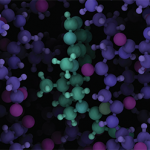Targeting p38
Along the MAPK pathway are the p38 kinases. According to Dr. Firestein, “p38 is a natural target for therapeutic interventions, especially inhibitors for inflammatory disease” such as rheumatoid arthritis (RA). The validation for p38, he said, is that it is activated in RA synovium and regulates cytokines and matrix metalloproteinases (MMPs), a large group of enzymes responsible for matrix degradation in RA that contributes to joint destruction. In addition, p38 blocks tumor necrosis factor (TNF) production and decreases fever and cytokines in humans exposed to lipopolysaccharide (LPS).
“The bad news is that it doesn’t work well in RA,” Dr. Firestein said. With more than 20 compounds being investigated in clinical trials, none has progressed beyond phase IIa. Even the best compounds rarely show ACR20 response rates over 40%. Given the evidence of toxicity, these compounds are unlikely candidates for future studies and clinical use, Dr. Firestein said.
JAK Inhibitors
In the JAK signaling pathway for cytokines, JAKs function as dimers by pairing with each other (e.g., JAK1 and JAK3), and there is some ability to have specificity with the various combinations, Dr. Firestein said. JAK1 is a primary signaling pathway for interleukin 6 (IL-6), so a JAK1 inhibitor could function like an IL-6 inhibitor. This feature makes JAK1 of particular interest in RA. JAK1 is also a compelling target in lupus because it blocks interferon signaling. JAK2 has potential for RA by blocking granulocyte-macrophage colony-stimulating factor (GMCSF), but it is also responsible for erythropoietin function. JAK3 is interesting for RA, psoriasis, and transplant therapies because of its ability to block T-cell cytokines.
One problem with JAK inhibitors is the associated toxicities, Dr. Firestein said. In trial, tofacitinib reduced the signs and symptoms of RA but was associated with adverse events including neutropenia, anemia, liver enzymes, lipids, and herpes zoster reactivation.2 These types of adverse events are probably mechanism based, Dr. Firestein said, and are expected by blocking JAK. Tofacitinib is a “pan-JAK inhibitor, but it appears to have greater effect at JAK1 and JAK3 that is probably why you can give a lower dose and not see the profound anemia from JAK2 inhibition,” Dr. Firestein said.
Other JAKs that have been investigated include VX-509, which is a JAK3 inhibitor but also has JAK1/JAK2 activity in vitro. INCB28050 is a JAK1/JAK2 inhibitor, but JAK1 inhibition can also inhibit JAK3, and anemia could be an issue with this molecule due to the JAK2 effects. GLPG0634 is theoretically a pure JAK1 inhibitor, Dr. Firestein said, but blocking JAK1 also may block JAK3, so there may be subtle differences noted in terms of side effects.
